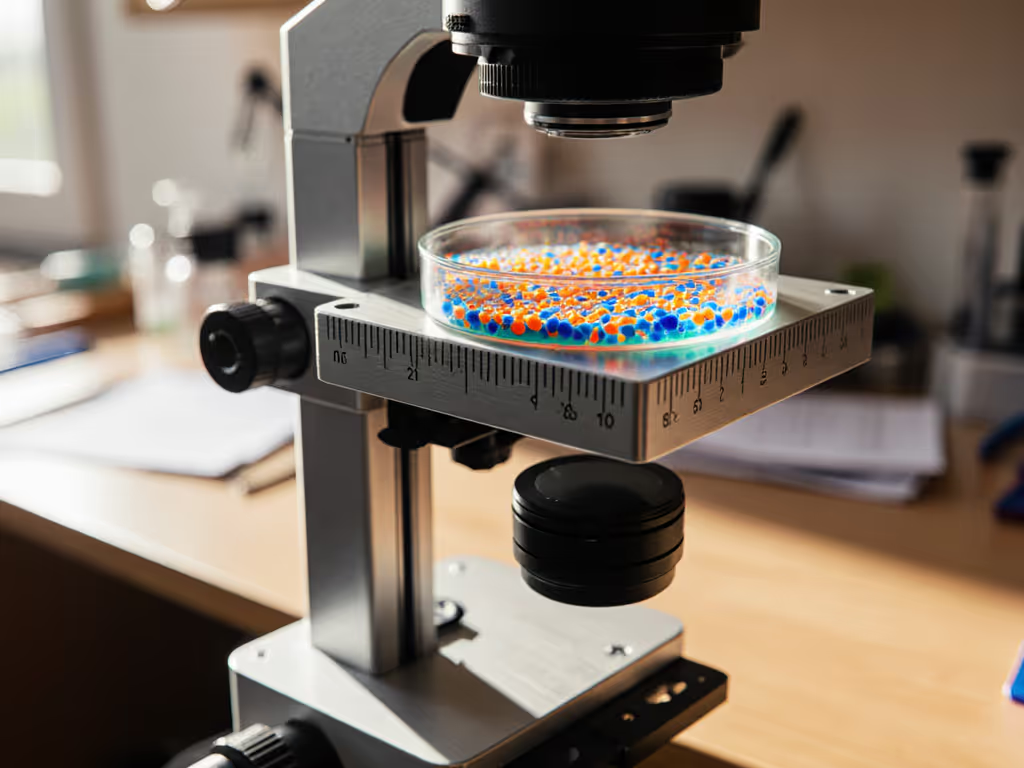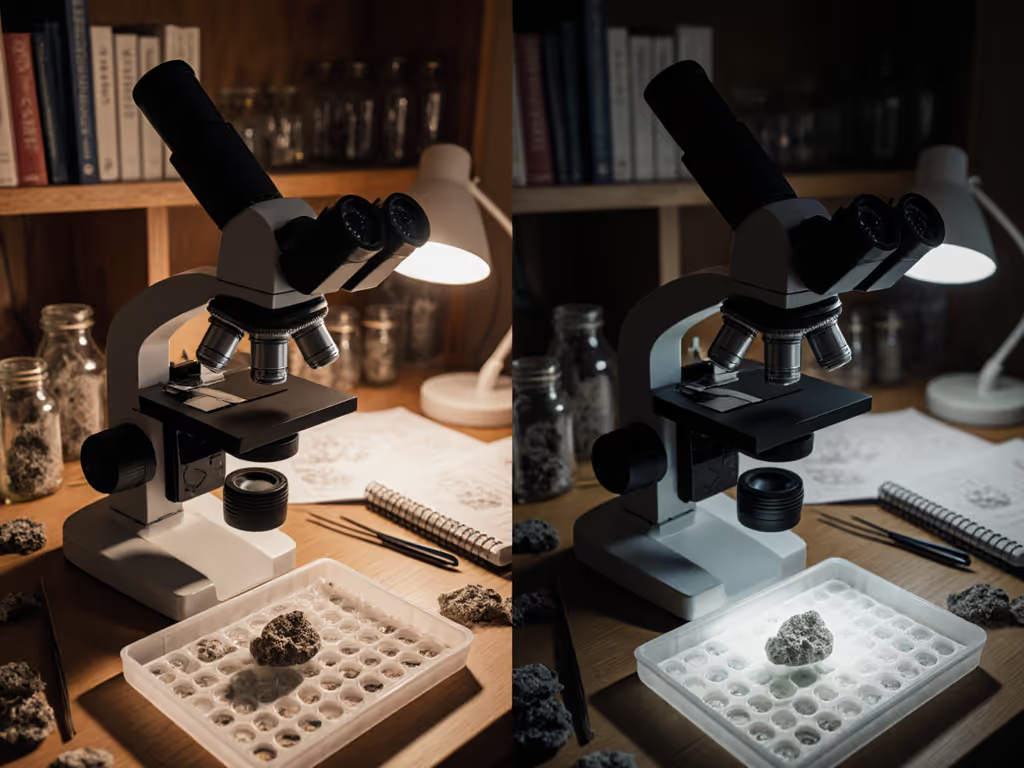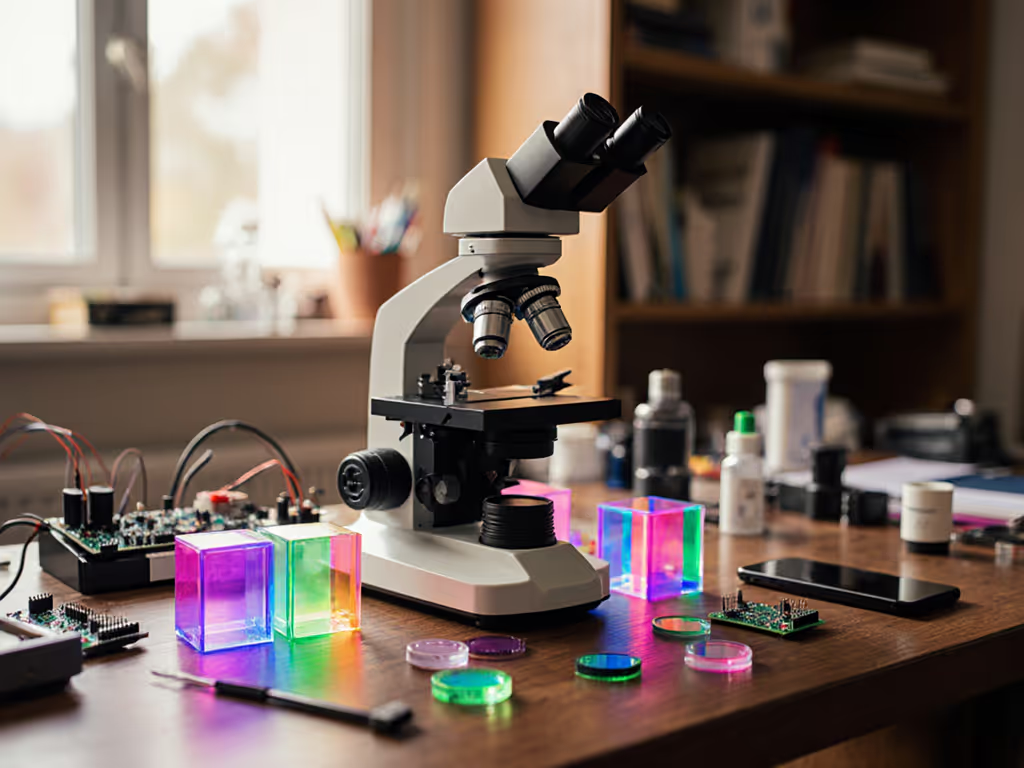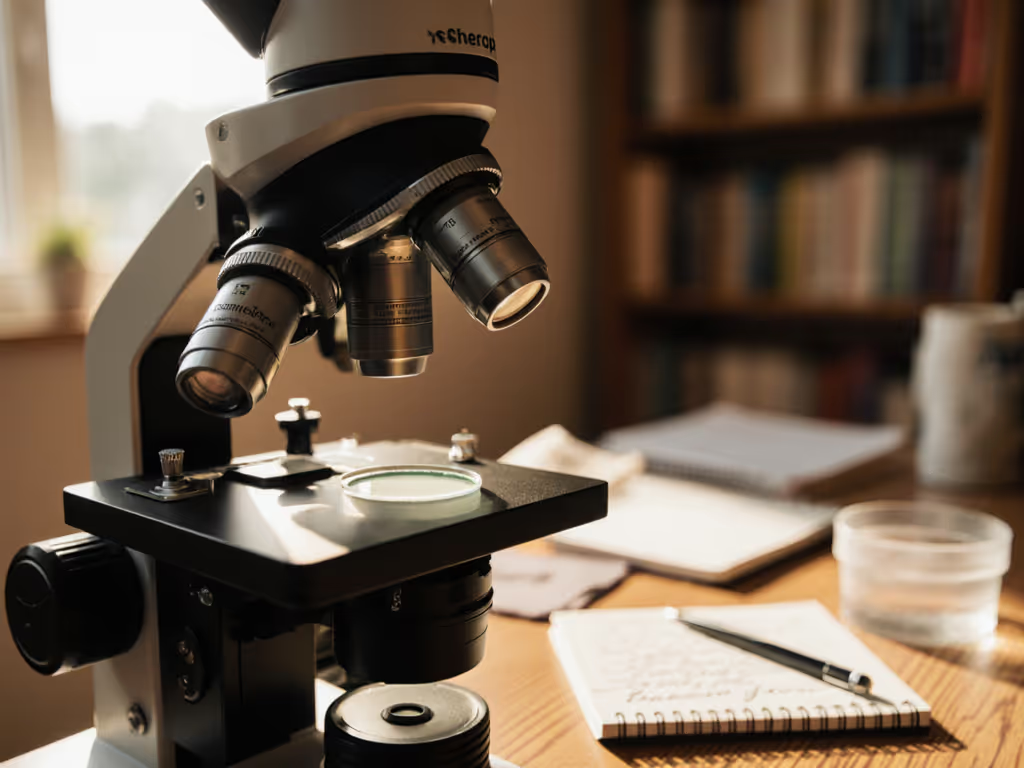
Forensic Microscopy Accessories: Your Essential Checklist
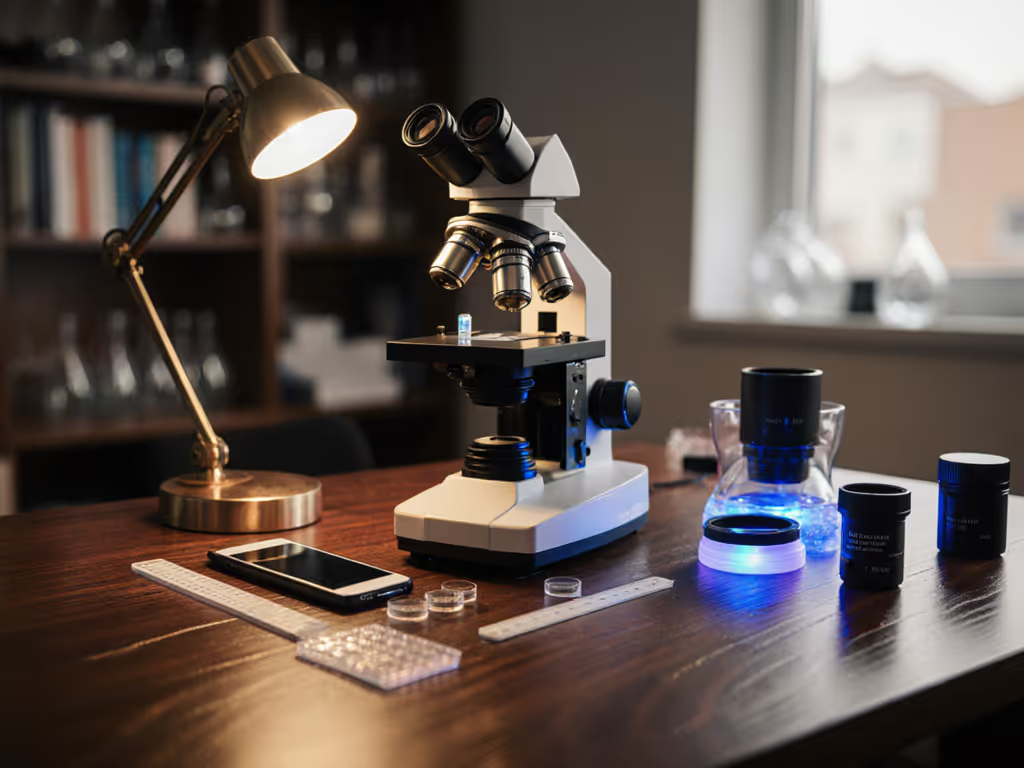
For hobbyist forensic enthusiasts working with forensic microscopy accessories at home, the right tools transform frustrating sessions into rewarding discoveries. Whether you're analyzing trace evidence from your backyard "crime scene" or practicing document examination microscope techniques, incompatible add-ons and poor ergonomics sabotage your focus. Remember: Your comfort is a performance spec (especially when you're documenting toolmarks at 2 AM). I once timed a session photographing pond algae: two hours felt like twenty minutes after I raised the scope, softened glare, and added a wrist rest. The images improved because I wasn't rushing or squinting. That afternoon reframed everything for me (comfort is performance when the session runs long).
Why Your Current Setup Might Be Holding You Back
Many hobbyists struggle with blurry fingerprint comparison documentation or eye strain during forensic comparison microscope work. You've invested in a microscope, but without purpose-built accessories, you're fighting glare, shaky hands, or incompatible cameras. For help choosing add-ons that fit your scope brand and model, see our accessory compatibility guide. This checklist solves those pain points with ergonomic, affordable solutions (no lab budget required).
Essential Accessories Checklist: FAQ Deep Dive
Q: What lighting accessories prevent eye strain during extended trace evidence analysis?
A: Standard microscope lights create glare that ruins detail and fatigues your eyes. Learn when to choose ring lights vs fiber optic illumination for surface detail and contrast. Instead, prioritize:
- Adjustable LED ring lights with diffusers (5,000K color temperature mimics daylight)
- Fiber optic illuminators for directional lighting on GSR or fiber samples
- Polarizing filters to eliminate glare on glass or metallic evidence
Gentle pacing matters. I've seen hobbyists skip diffusers to save $20, then develop migraines after 30 minutes. A $15 fabric diffuser (like a cotton lens cloth stretched over a ring) softens harsh reflections during document examination microscope work. For trace evidence analysis, polarized light reveals hidden striations in bullet fragments (critical for matching toolmarks).
Q: How do I document evidence clearly without expensive forensic comparison microscope cameras?
A: Forget lab-grade digital systems. Repurpose what you own:
- Smartphone adapters with threaded mounts (ensures stability; no handheld shake)
- Free software like OpenCV for stitching high-mag images (e.g., 10x GSR patterns)
- DIY focus rails from 3D-printed files (lets you adjust position millimeter by millimeter)
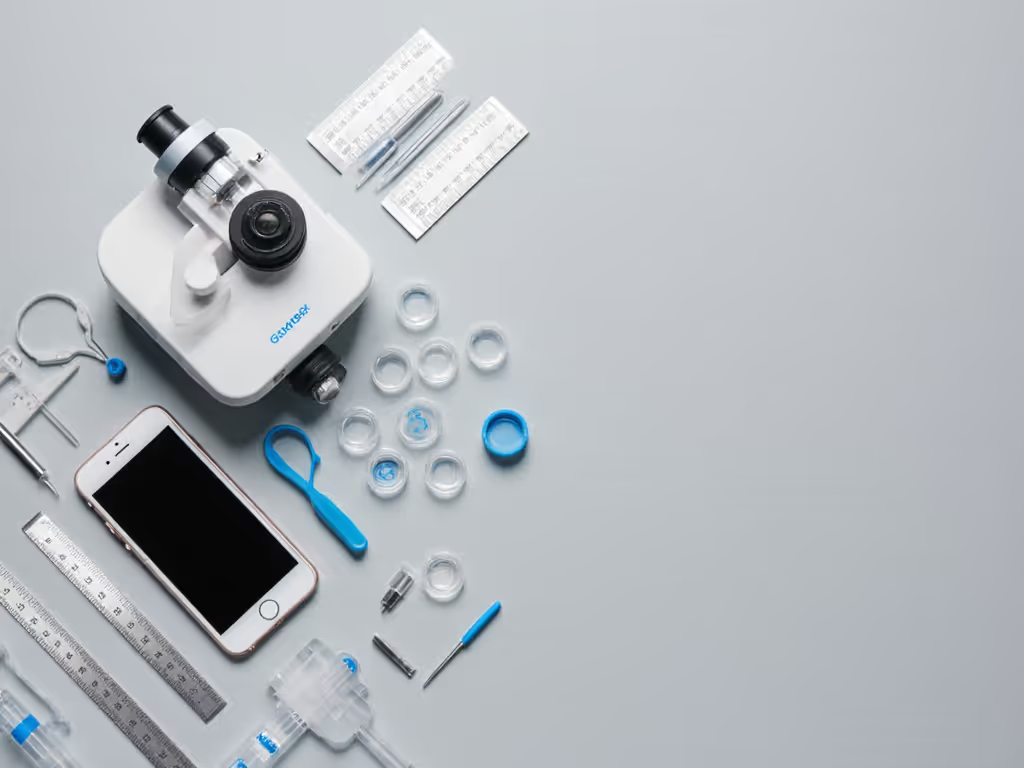
Why this works: Most modern smartphones capture 4K video. A $12 threaded adapter (e.g., Phone Skope) eliminates the "jiggle factor" when photographing fibers. I've used this setup to document pond algae (imagine applying it to fingerprint comparison verification). For tested options across budgets, see our best phone microscope adapters roundup. Pro tip: Shoot 10-second videos at 60fps, then extract the clearest frames. Saves you from redoing sessions!
Q: Which ergonomic accessories prevent fatigue during long forensic microscopy sessions?
A: Posture ruins more hobby labs than budget constraints. To upgrade comfort and stability, explore our microscope ergonomic accessories guide. Invest in:
- Adjustable-height stands (bring your eyes to the eyepiece, not vice versa)
- Wrist rests with gel padding (reduces tremor during fine adjustments)
- Eyepiece diopter correctors (if you wear glasses; prevents squinting)
Comfort is a prerequisite for sustained focus. During a 3-hour session matching textile fibers, I added a 2" foam block under my standing desk. My neck stopped aching, and I noticed subtle dye differences I'd missed earlier. Your comfort is a performance spec (especially when comparing striations on forensic comparison microscope work).
Q: What cheap add-ons solve compatibility headaches with crime scene microscopy tools?
A: Generic parts fail under magnification. Prioritize:
| Accessory | Hobbyist-Friendly Fix | Cost |
|---|---|---|
| Stage clips | Binder clips with rubber grips | $1 |
| Slide storage | Index card boxes + dividers | $3 |
| Focus knobs | Silicone grip wraps (prevents slipping) | $2 |
- Universal adapters with C-mount threads (works with most hobby scopes)
- Calibration slides ($15) to verify magnification accuracy
Data-backed tip: A Leica study found 68% of amateur microscopy errors stem from improper stage stability. If you measure or compare toolmarks, our calibration step-by-step explains using calibration slides and stage micrometers correctly. Your $0.50 binder clip solution? It's been used in field forensic kits for decades to secure evidence slides during transport.
Q: How do I avoid "analysis paralysis" with too many accessories?
A: Follow this triage workflow:
- Identify your bottleneck: Blurry images? → Lighting first. Fatigue? → Ergonomics first.
- Test one accessory per week: Track time-on-task and clarity (e.g., "Ring light: 20% faster GSR analysis").
- Stick to open standards: C-mount adapters > brand-locked systems.

Gentle pacing isn't just for pond algae. When I organized my home scope bench, I labeled every accessory bin with evidence categories ("Fibers," "GSR"). Now I spend 40% less time searching (and my documentation quality jumped). Comfort creates throughput.
Actionable Next Step: Build Your Baseline Kit in 10 Minutes
Don't wait for "perfect" forensic microscopy accessories. Right now:
- Grab a white sheet of paper and place it under your microscope's light source as a diffuser.
- Stack books under your chair until your eyes align with the eyepiece (no neck strain).
- Use your phone's voice recorder to narrate findings during sessions (no more distracted note-taking).
These take seconds but address the core issue: Your physical comfort directly impacts observational accuracy. Within a week, you'll see clearer details in crime scene microscopy tools work (and wonder why you ever accepted squinting as "part of the process").
Remember: In forensic microscopy, joy lives in the details. And those details? They're easier to find when your hands aren't shaking and your eyes aren't watering. Your comfort isn't indulgence (it is the secret spec sheet for better results).

